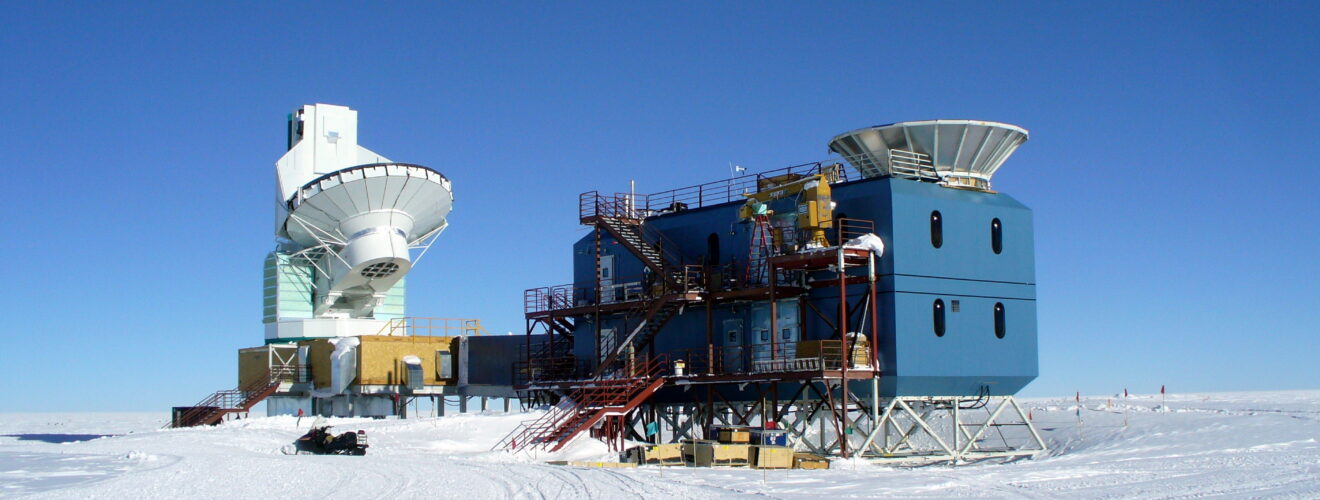Dirty are the windows through which we see the Universe

BICEP2’s claim of a detection of primordial gravitational waves amounts to a dust bowl
On Friday 14th March 2014, a rumour started to spread among scientists that the BICEP2 collaboration were due to announce something extraordinary in a press conference to be held on the following Monday. The day of the leak being a Friday was for the collaboration somewhat fortuitous, allowing the story to simmer over the weekend, making the Sunday newspapers and spreading on social networks. By the start of the announcement on Monday, the press conference was packed and the online broadcast had long since imploded from heavy traffic.
The results being presented were of apparent primordial gravitational waves detected in part of the night sky (The GIST covered the story at the time 1). Gravitational waves are one of the last great unknowns from science in the early 20th Century. They were predicted by Einstein to exist in his seminal work on general relativity in 1916, and they arise from the violent redistribution of matter in the Universe’s most massive objects. Einstein never thought it would be possible for these waves to be detected, as his calculations told him they were incredibly small, but an indirect detection was made by Hulse and Taylor in 1974 when they made the first observation of a binary pulsar (winning them the 1993 Nobel Prize). Recent work undertaken by astronomers and physicists at the South Pole as part of the BICEP2 collaboration has, along with other work by scientists around the globe, tried to make further, albeit indirect, detections of these elusive waves. There are numerous ways in which these waves are hunted, and in particular the BICEP2 detector was looking for a distinct pattern imposed on the radiation left in the sky from the Big Bang called ‘B-mode polarisation’. John M. Kovac, the principle investigator for BICEP2, said in his opening statement at the press conference 2: “The theory of cosmic inflation, which attempts to explain the Big Bang itself, predicts that the early universe will contain a background of gravitational waves that produce [a] swirling B-mode pattern of polarisation, particularly on angular scales of a few degrees on the sky. Today we are going to be reporting the detection of B-mode polarisation as seen by the BICEP2 telescope that matches very closely the predicted pattern.”
The technical documents published on the collaboration’s website at the time of the announcement claimed that the results had taken into account the possibility of dust from our galaxy or faults in the telescope’s optics causing these signals to show up as evidence for gravitational waves 3. Harvard professor Avi Loeb stated: “If it is real, the signal will likely lead to a Nobel prize.”
Shortly after the announcement, doubts started to arise over the collaboration’s claim that dust was not causing the signals they witnessed. The scientists at BICEP2 had tried to remove the effect of dust in the Universe causing these ripples by using models which predicted the expected pattern of dust in the telescope’s line of sight. Crucially, though, the models used by the team had not accounted for the possibility of magnetic fields produced from supernova explosions causing dust particles to become polarised. Work published a few weeks after the results showed a dust cloud present over the part of the sky BICEP2 had looked at 4. This showed that the B-mode polarisations BICEP2 was using to claim a discovery could well have been caused by nothing other than particles of iron and other magnetic materials.
By the time the collaboration had published an article on their results in the esteemed science journal Physical Review Letters 5, they had dampened down the claim of a discovery by not categorically ruling out the possibility that dust could be a problem. On the subject of dust, the paper stated: “…these [dust] models are not sufficiently constrained by external public data to exclude the possibility of dust emission bright enough to explain the entire excess signal.” The earlier optimism was perhaps fading with this caveat that placed the blame for any misgivings about the results on a lack of good dust data.
It just so happened that good dust data was just around the corner. The Planck satellite, a pan-European project aimed at mapping the first light of the Universe 6, was due to release data related to the part of the sky imaged by BICEP2. When this data was released, it was accompanied by a paper 7 which showed that this part of the sky contained much more dust than the BICEP2 scientists had thought – enough to account for the signals witnessed in the detector. With the release of this data, BICEP2’s claim of a detection was dealt a heavy blow. There remains the possibility that the elusive song of a gravitational wave is buried in the detector’s archives, but it will require further refinement of the original analysis. The BICEP2 and Planck collaborations have combined their datasets to maximise the chance that any hints in this regard are found, and they hope to publish their results – positive or otherwise – towards the end of the year.
In general, scientists are extremely careful about making any claims of a discovery until the methods and observations have been rigorously reviewed by peers. Perhaps the way in which the media gripped the story early on had something to do with the premature claim by members of the collaboration that a discovery had been made, but this was probably not helped by the timing of the press release and the press leak that preceded it. The optimism of a detection was not shared by all members of the astronomy community, however, with the likes of Neil Turok, director of the prestigious Perimeter Institute, coming out against the claim being made that the B-mode polarisations amounted to a new discovery. He urged the scientists making the claim to wait for the later release of corroborating data from Planck before claiming the detection to be valid 8. Time has shown he might have been right to appeal for caution.
So what is next for BICEP2? Well, the detector has finished its job and is now being decommissioned. In its place will come BICEP3, a detector with enhanced resolution 9, continuing to hunt for signals from the Big Bang.
Despite the disappointment that the last piece of Einstein’s jigsaw still eludes us, it’s still cool that scientists at the South Pole detected the effect of magnetic fields on bits of dust beyond our galaxy.
Specialist edited by Rebecca Douglas and copy edited by Barry Robertson.










